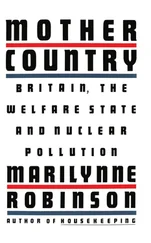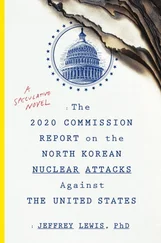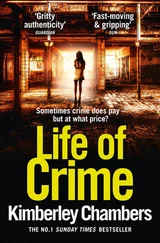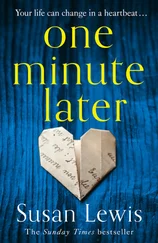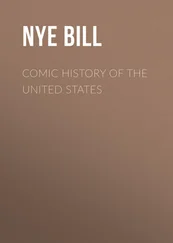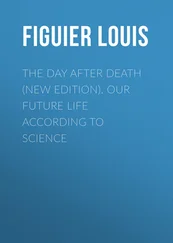The BMA debate was interrupted by the news that in Labour’s landslide Sir William Beveridge, the man who had demanded a National Health Service three years earlier, had lost the Berwick seat he had taken for the Liberals in 1944. Some delegates broke into a cheer. ‘I have spent a lot of time,’ one eminent Harley Street surgeon said, ‘seeing doctors with bleeding duodenal ulcers caused by worry about being under the State.’ 5Well before Bevan arrived, the doctors were deeply suspicious about the form any proposed National Health Service would take. That very worry, however, reflected a remarkable consensus which the doctors shared and Bevan inherited: that there was going to be a National Health Service. The question was what form it would take.
Included in Bevan’s inheritance was the Emergency Medical Service, plans for which were drawn up by Chamberlain’s government in the wake of Munich and in fear of what the Blitz would – and did – mean. The creation of the EMS followed surveys conducted in 1937 and 1938 which showed just how deficient hospital services were. By October 1939 the government had provided nearly 1000 new operating theatres, millions of bandages and dressings, and tens of thousands of extra beds in ‘hutted annexes’ some of which remained in use for more than two decades after the war. A national blood transfusion service had been created. As the war progressed, free treatment under the emergency scheme had gradually to be extended from direct war casualties to war workers, child evacuees, firemen and so on, until a sixty-two-page booklet was needed to define who was eligible. Although the elderly and others remained excluded, between 1939 and 1945 ‘a growing section of the population enjoyed the benefits of the first truly “national” hospital service’. 6Wartime proved that a national health service could be run.
The Emergency Medical Service had itself heavily extended what existed before. On the hospital side just before the war there were 1334 voluntary hospitals and 1771 municipal hospitals. The former ranged from the twenty great English teaching hospitals each with around 500 beds, of which no fewer than thirteen were in London along with nine post-graduate hospitals such as the Great Ormond Street Hospital for Sick Children, to tiny cottage hospitals of ten beds or less. The average was a mere sixty-eight beds. The number of voluntary hospitals, and particularly the number of small ones, had grown sharply after the First World War. Among the older foundations St Bartholomew’s could claim almost 800 years of history, but many such as the Royal Free, whose name encapsulated its aim, had been founded during the great burst of Victorian philanthropy aimed at improving the health care of the poor. This, initially, they did successfully, in as far as medical knowledge then allowed success. In 1891, 88 per cent of the voluntary hospitals’ income came from gifts and investments. By 1938, however, only 33 per cent of their revenue came this way, and less in some cases. Payments from patients had risen from 11 per cent to 59 per cent of their income, 7financed either out of patients’ own pockets, by health insurance through, for example, the middle-class British Provident Association, or from factory savings schemes and Saturday Hospital Funds. These last, into which people paid against future treatment, were run by the hospitals themselves. For the less well-off such schemes often bought out-patient but not in-patient treatment. Lady Almoners controlled means-tested access to beds, and substantial donors were often allocated free beds to distribute to the deserving, so a letter of reference from a JP or a councillor or from the local gentry might have to be begged to ensure admission. 8Increasingly the voluntary hospitals came to rely on charges and on private patients. The price of survival, as Ruldolf Klein has put it, became ‘to an extent the repudiation of the inspiration which had led to their creation in the first place’. 9
Despite all these stratagems, flag days, and ‘a begging bowl [always] at the end of the ward; you would not dare to pass that bowl if you visited on those days’, 10by the late 1930s many of the voluntary hospitals, which accounted for about one-third of the beds, were in deep financial trouble. Even the great teaching hospitals endlessly teetered on the edge of bankruptcy. As early as 1930, the House Governor of the Charing Cross Hospital declared that the hospitals could not rely on sweepstakes and competitions for survival and predicted that within ten years they would be nationalised – state-supported and state-controlled. 11In 1932 out of 145 voluntary hospitals in London, 60 failed to balance their books, 12and by 1938 the hospitals were pleading with the Ministry of Health for state grants. 13
Geoffrey Rivett, a senior health department civil servant who was a driving force behind the controversial new family doctor’s contract in the 1980s, records in his history of the London hospital system:
It was said that a hospital need never despair so long as it was bankrupt, but the plaintive cry of ‘funds urgently needed and beds closed’ led in the end to the belief that the voluntary system was not only insolvent, but might not be worth saving. 14
The Second World War and the Emergency Medical Service did save it, but only for a time. In these hospitals, consultants had honorary, unpaid appointments; they made their income from private patients while treating the less well off free. As a result specialist care was only available in parts of the country wealthy enough to provide sufficient private practice to attract specialists. These more prosperous areas were, needless to say, not necessarily those with the greatest need. Elsewhere, surgery and anaesthetics were carried out by GPs (family doctors) working in the hospitals. What this could mean, even after the founding of the NHS, has been illustrated by Dr Julian Tudor Hart, who recalled that just before specialists replaced GPs at Kettering General Hospital where he worked in 1952, a young woman with acute intestinal obstruction was admitted. At Kettering GPs did the surgery,
helped once a week by a part-time consultant who travelled 100 miles by rail from London.
The family doctor opened the abdomen to find multiple obstructions caused by Crohn’s disease. He excised four or five segments along the seven metres of small intestine, leaving the loose ends to be reconnected. Then his troubles began; which end belonged to which? Never having met this unusual condition before, he had waded into the macaroni without planning his return. In those days emergency surgery was still regarded by patients as a gamble with death. If he had confidently reconnected the tubes as best he could, praying he hadn’t created any collisions, dead ends or inner circles, he would probably have been acclaimed whatever the outcome. Being a man of integrity, he persuaded his GP-anaesthetist colleague to keep the patient unconscious for what turned out to be four hours, with a small coppice of metal clamps splayed out from the incision, telephoned the London consultant, and waited for him to come up by the next train to sort it all out. Remarkably, the patient survived. It was the last anecdote of a closing era of GP surgery; the professionals put an end to all that, and not before time. 15
Alongside the voluntaries were the municipal hospitals, many of which had grown up as appendages to the 1834 workhouses: some were still called the ‘Workhouse Infirmary’. Run by local authorities, these were regarded in the main by doctors, nurses and patients alike as grossly inferior to the voluntary hospitals – certainly outside the big cities – and real stigma attached to many. They comprised a mix of old Poor Law institutions, the great mental illness ‘bins’, and the ‘fever’ and ‘TB’ (tuberculosis) hospitals. Most depended on general practitioners to service them. They ranged in quality from the occasionally excellent to the awful. But they had in the decade before the war been supplemented in some cities by a determined expansion of purpose built hospitals. Before 1930 only three local authorities had exercised a right under the 1875 Public Health Act to establish general hospitals. But by 1938, councils in England and Wales provided 75,000 general beds (as opposed to the mental or fever beds they ran) and the London County Council was arguably the biggest hospital authority in the world, rivalling in size the entire voluntary sector. Middlesex developed a hospital service of the highest class, while City hospitals in Birmingham, Bristol, Newcastle, Sheffield and Nottingham set new standards for local authority provision, attracting academics as well as employing specialists and staff doctors. Access to their general hospital beds was means-tested, although on one estimate only about 10 per cent of costs were recovered from patients. 16None the less, the stigma of the old Poor Law hospitals which made up the bulk of local authority provision still left many reluctant to resort to them: ‘There was a certain sense of shame in being taken there,’ patients recorded. 17Patients from just over the border in the next authority would often be refused admission to empty beds, and voluntary hospitals dumped patients who failed to respond to treatment on to the Poor Law infirmary for the chronic sick. 18
Читать дальше
![Nicholas Timmins The Five Giants [New Edition]: A Biography of the Welfare State обложка книги](/books/701739/nicholas-timmins-the-five-giants-new-edition-a-cover.webp)
